I have a friend who takes pictures for me of ecclesiastical embroidery that she comes across in her travels.
When she leaves town, I never know if she’ll run into something picture-worthy, but when she does… it’s always exceptional!
On her last excursion, she was able to photograph an antique altar frontal. This piece was donated to the monastery that owns it, and the provenance is not known.
But there’s something about the style of piece (we’ll talk about it below), and of course, there’s the sheer beauty, skill, and splendor of the piece that’s worth noting, even if we don’t know anything about where it came from.
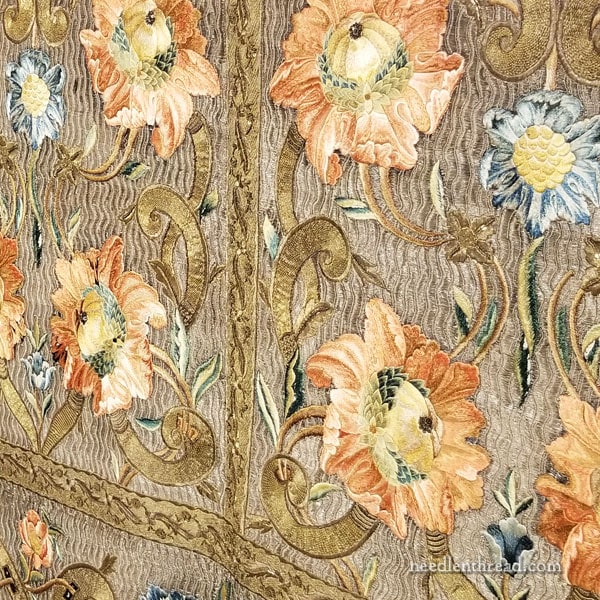
The first thing that strikes me about this piece is the overall sense of movement in it, thanks to the goldwork embroidered background and the exuberant flowers that seem to spring from the background.
The whole background of the panel is embroidered with vertical, wavy lines of gold. Breaking across the background, there are larger gold swashes that swirl into silk embroidered flowers in corals and blues.
The photo below is the whole altar frontal – click on it for a larger version:
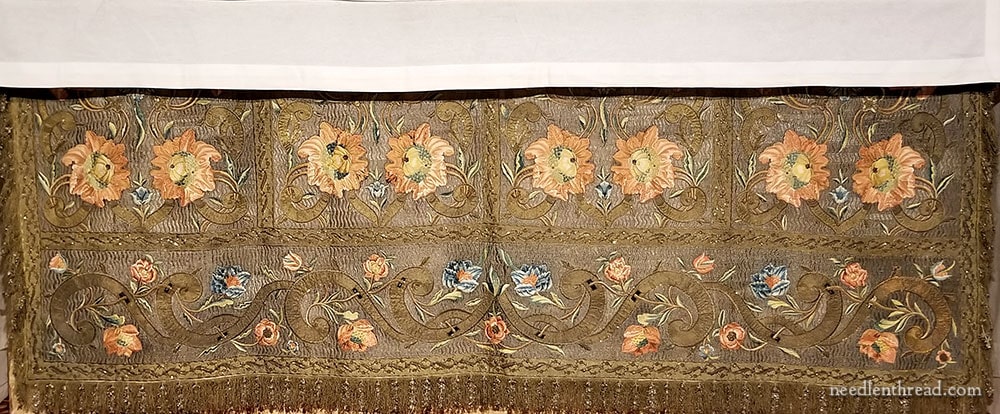
You can see the movement of the whole piece in the photo above. The top edge of the frontal has a linen altar cloth hanging over it (the white at the top of the photo that creates the horizontal shadow line).
Notice how the whole panel is made up of five areas, blocked off by what looks like more goldwork in straight, wide ribbons. This is a galloon of sorts – a wide, probably pre-made banding, used to connect the separate pieces of the whole panel.
Again, much of this is guess work, without seeing the piece myself, but this is what I’m guessing:
The top four sections were probably worked as individual, small panels before constructing the larger panel. The bottom longer, horizontal section was also most likely worked as a separate individual panel. Then all the pieces were put together on one backing cloth, with the galloons (banding) over the joins. They blend in with the overall design, but they also mark out the design layout of the piece.
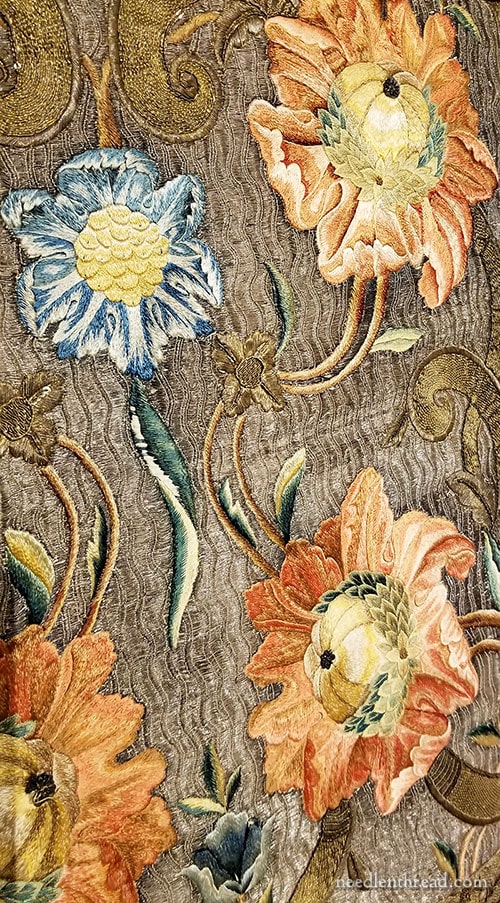
The frontal is in good shape, overall. You can, however, see a few spots where the silk is worn.
If you follow the long vertical leaf below the blue flower downwards, you’ll see some jagged, whiter areas showing on that leaf. That’s where the silk is missing.
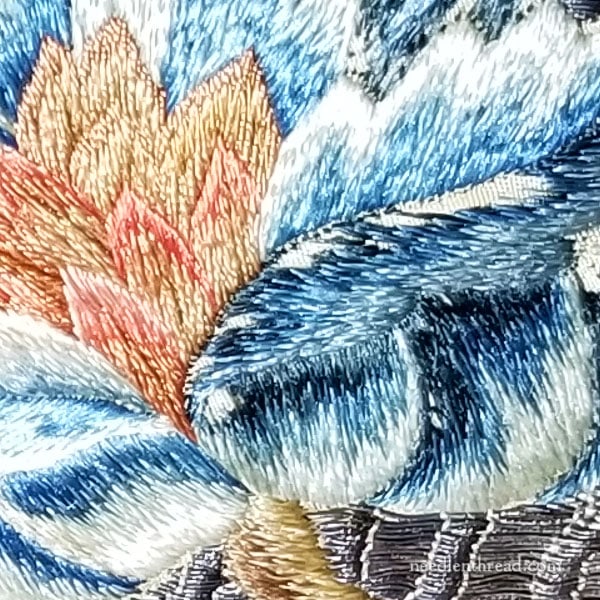
There’s another little bit of silk missing on this beautiful blue flower above.
But look how vibrant and beautiful the silk still is!
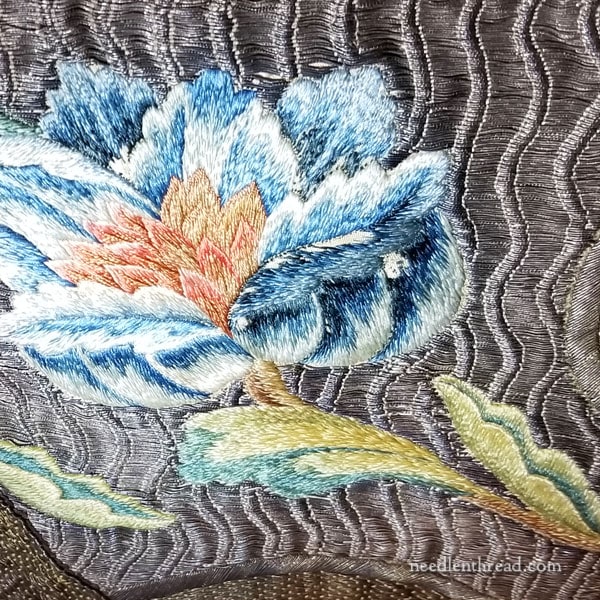
Here’s that whole flower.
In the photo above, you get a good sense of the gold background. You can see that the floral work and the goldwork background were embroidered on the same ground fabric. The flower is not applied on top of the goldwork background. They work right into each other as the gold moves around the edge of the flower.
This tells me a little bit about the piece. It was certainly conceived and executed as we see it now. This is not a salvage job or a repair job, where a piece was altered (no pun intended). The galloons, the fringe, the background goldwork – all of it works well together and seems to have aged together. There doesn’t seem to be any sign of repair, any cutting and re-assembly, or anything like that
It was also not an assembly-line job, where different embroiderers of different skill levels worked on elements separately and then brought them all together into the one piece, using appliqué to assemble. While the four smaller panels may have been worked on separate frames and then joined on a whole cloth along with the horizontal lower panel, the individual embroidered elements are not a matter of assembly line work.
Considering it in that light, I think it is a more valuable piece of embroidery. It probably cost much more to create it, than if it had been an “assembly line” processed piece, like we see in much ecclesiastical embroidery, especially from the late 1800’s through the first half of the 1900’s.
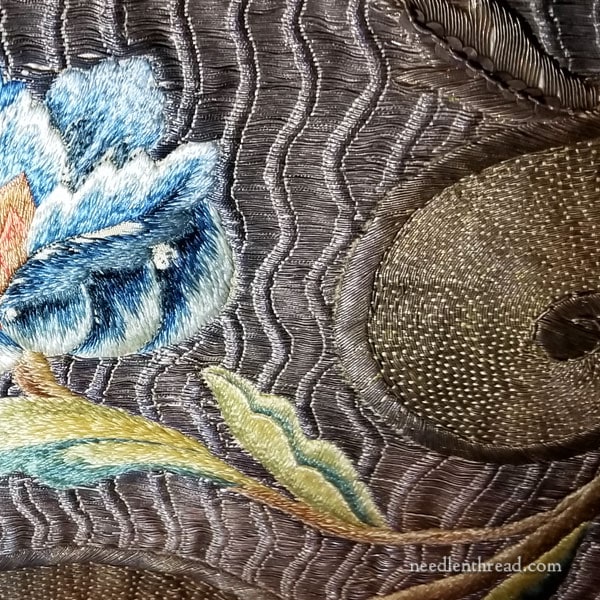
A little shift to the right on the blue flower, and you can see not only that beautiful silk shaded leaf, but you can also see the goldwork swash, worked with a bricking pattern over the laid threads.
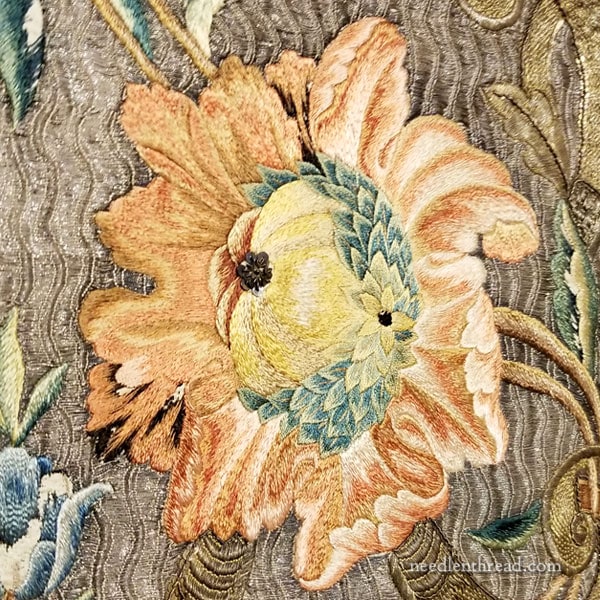
One of the magnificent coral flowers, up close.
There’s something about these flowers that are reminiscent in style to Morris, don’t you think? Very exuberant flowers with acanthus-like petals – very natural in movement and flow, yet quite stylized in design. Perhaps this hints at the era in which the piece was made?
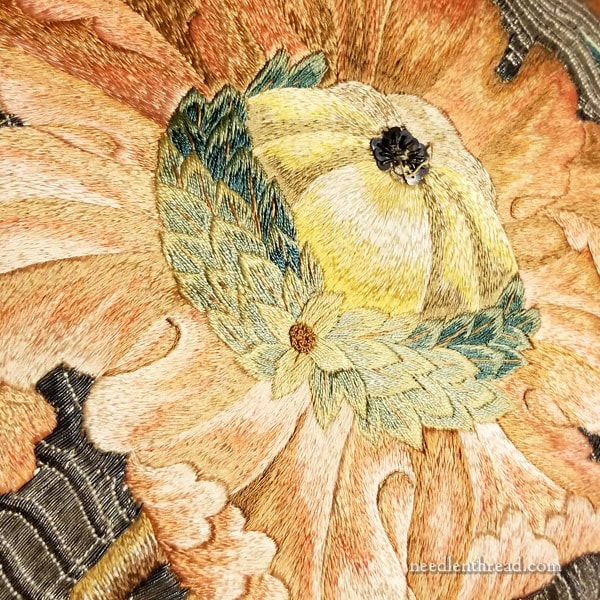
The spangles at the top of the center yellow section are wearing the threads. And they are quite oxidized to black.
The spangles started me thinking!
Can you imagine how brilliant this piece was, when new? How the gold shimmered and shone?
I get different reaction when I show new goldwork to folks who have only seen old goldwork – either in museums or in church use. Over time, thanks to age and environment, the gold threads oxidize and darken. Sometimes, people who are more accustomed to seeing aged goldwork react with surprise to new goldwork. They often tend to think new goldwork looks gaudy and brassy.
But just imagine – all of these old pieces of goldwork that you come across in museums, in books, online – they were once shimmering in golden glory, just like new pieces of goldwork created today. How glorious and brilliant they must have been!

I would love to have seen this piece in its glory, brand new!
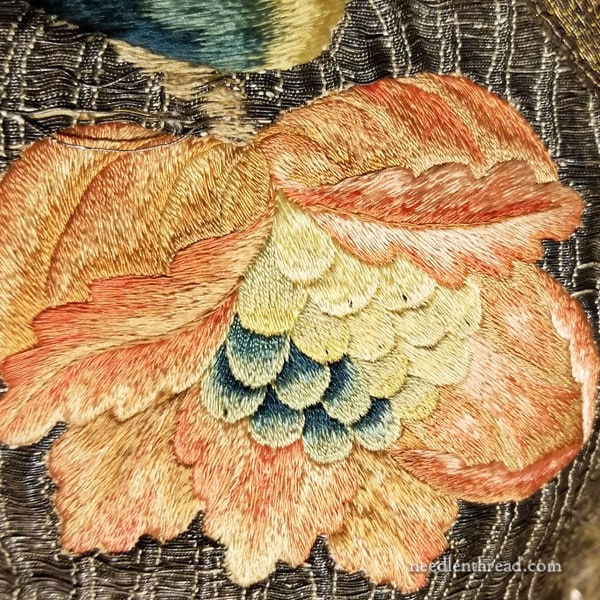
This silk is in extraordinarily good shape. I love the shading on the petal turnovers!
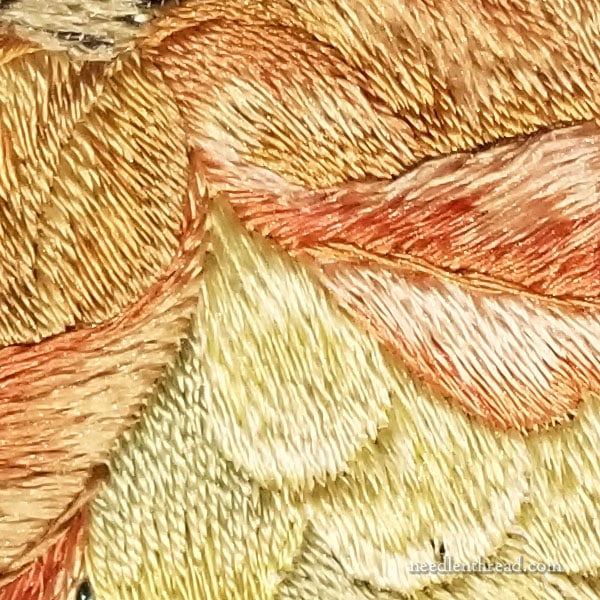
I know the close-ups aren’t as sharply in focus, but they give you a good idea of how the light plays off the silk, when it is stitched in different directions.
You also get a sense of the different twists in the silk threads, another aspect that affects the play of light on silk.
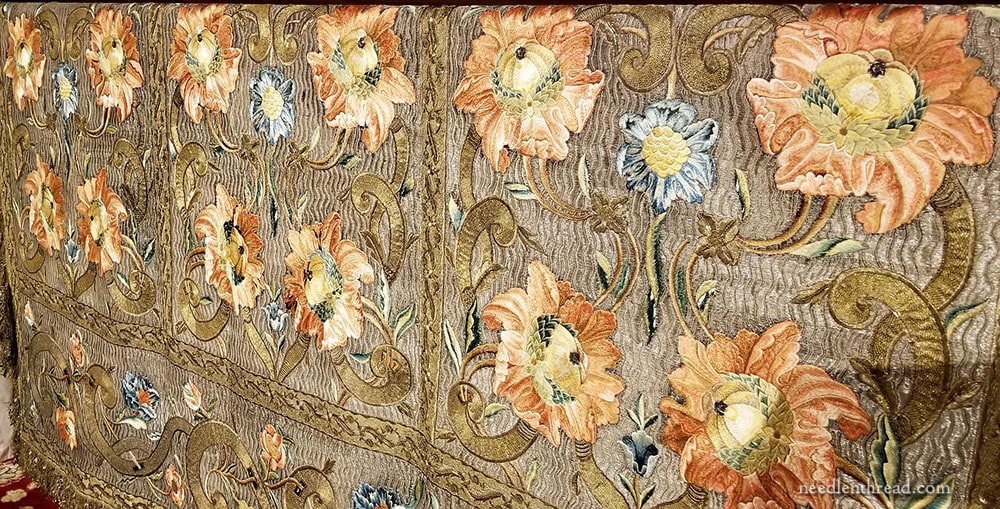
Click on the photo above for a larger version.
This is what I love about old goldwork. It still gleams! From the side, a little farther back, you really have a sense of the movement of the gold, while enjoying a small glimpse of what the gold might have been more like, in its earlier days.
And just check out the gleam on that silk! Oh, the wonder of silk – because its sheen is naturally occurring (it is the nature of silk), it will never lose that property!
So there’s a little bit of inspirational, hand embroidered beauty to start your week off! I hope you enjoyed the photos and my thoughts while processing them. I’d love to study this piece in person and learn more about it, but for now, the vicarious excursion will have to do!
And thanks to Louise for thinking of me and taking the time to take photos! Always appreciated!